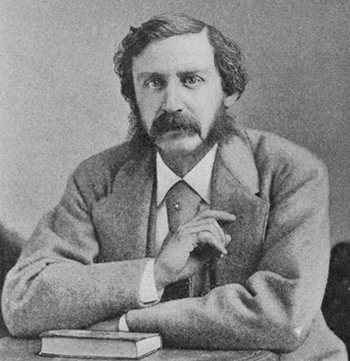Introduction
Essential Question: Where do we look to find truth?
During the time of Realism, roughly between 1860 - 1910, authors focused more on the characters in the story.
The population in America was rapidly growing due to advancements in science, industry, and transportation. The hardships of the Civil War caused many Americans to shift their focus on the hard realities of life; people were less optimistic about the future.
There was an emphasis on believable characters instead of dark heroes. Authors tried to use the characters' natural vernacular, or dialect, because the characters in the story were more important than the plot of the story. This was a true representation of reality in literature from people who opposed Romanticism.
Watch the presentation Realism and Naturalism (5:14) to learn the characteristics of Realism and Naturalism. Take the quiz after the presentation is complete to see if you understand the two terms.
Login instructions for SAS Curriculum Pathways.
Be sure you complete the Unit 6 Notes as you go through the unit.
Who is considered an outcastrefused acceptance of society? Are there outcasts in today's society? Would you consider the people in these pictures outcasts?







Do you agree with this statement? Some people choose to be outcasts of society while others are forced.
Consider the title of the next story you will be reading, "The Outcasts of Poker Flat." What do you think will happen in the town of Poker Flat?
 Bret Harte (1836-1902) is the author of "The Outcasts of Poker Flat." He wrote short stories about life in Gold Rush-era California. Harte's invention of the ideal "western" characters like the shady prospector, the cynical gambler, the tough cowboy, and the prostitute with a heart of gold created the legends through which Americans learned to understand the culture of the "Old West."
Bret Harte (1836-1902) is the author of "The Outcasts of Poker Flat." He wrote short stories about life in Gold Rush-era California. Harte's invention of the ideal "western" characters like the shady prospector, the cynical gambler, the tough cowboy, and the prostitute with a heart of gold created the legends through which Americans learned to understand the culture of the "Old West."
Harte is one of the first authors to use local color in a story. Using local color allows authors to portray accurate dialect and mannerisms used in a specific region. Characters are livelier and more dynamic when this happens.
"It's agin justice," said Jim Wheeler, "to let this yer young man from Roaring Camp - an entire stranger - carry away our money."
|
Lesson Objectives
Following successful completion of this lesson, students will be able to:
The above objectives correspond with the Alabama Course of Study: English Language Arts, Grade 10 objectives: 1, 3, 22, 22a, 23, 24, 30, 31, 31c, and 31d. |
 |